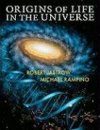![Origins of Life in the Universe Origins of Life in the Universe]()
Click to have a closer look
About this book
Contents
Customer reviews
Biography
Related titles
About this book
This concise and highly illustrated textbook traces the evolution of the Cosmos from the Big Bang to the development of intelligent life on Earth, conveying clear science in an engaging narrative. By mapping the history of the Universe for introductory science and astrobiology courses for non-science majors, this book allows many of the most fascinating questions in science to be explored. What is the origin of the Universe? How do stars and planets form? How does life begin? How did intelligence arise? Are we alone in the Cosmos?
Physics, chemistry, biology, astronomy and geology are combined to create a chronicle of events in which the swirling vapors in the primordial cloud of the Universe evolved over billions of years into conscious life. Outlining, the latest discoveries in astrobiology, this textbook is suffused with the excitement of this fast-moving field.
Contents
Part I. The Universe: 1. Our place in the Universe; 2. A view of the origin of the Universe; 3. Life from the cosmic cauldron; Part II. The Solar System: 4. Formation of the conditions for life; 5. Origins of a habitable planet; 6. Prospects for life; 7. The evolution of a hostile world; Part III. The Earth: 8. Composition and structure of a habitable planet; 9. The changing face of an active habitable planet; 10. Climate change and the evolution of life; Part IV. Origin and History of Life on the Earth: 11. The origin and evolution of life; 12. The early history of life on Earth; 13. The development of higher life forms; Part V. Evolution of Intelligent Life: 14. The mammals and the rise of intelligence; 15. The evolution of higher intelligence; 16. Are we alone in the Universe?; Epilogue. Are we alone?; Appendices.
Customer Reviews
Biography
Robert Jastrow is well known internationally as an astronomer and author of many widely acclaimed books. His initial research experience was in the field of nuclear physics, and his later work has been in planetary science, atmospheric physics, weather and climate prediction, and application of satellite observations to studies of earth resources. Dr Jastrow joined NASA when it was formed in 1958 and in 1961 set up NASA's Goddard Institute for Space Studies, a U.S. Government laboratory charged with carrying out research in astronomy and planetary science. Michael Rampino is an associate professor of earth science and biology at New York University, and a research associate at GISS in New York. His research spans many areas of the earth sciences, especially the inter-relationships between the Earth's changing environments and the evolution of life. He is Series Co-Editor for the highly acclaimed Encyclopedia of Earth Sciences (Springer) and the Editor-in-Chief of the Earth Science Encyclopedia On-Line.
Textbook
By: Robert Jastrow and Michael Rampino
444 pages, 245 diagrams and photos
'This book is a great introduction to the grand journey of 14 billion years of cosmic evolution from the Big Bang to human evolution! It presents a sweeping synthesis of the sciences ranging from astronomy and astrophysics to planetology, geology, climatology, evolution of life and molecular biology and makes an original and exciting text for a general introductory science course for non-science majors. The text flows smoothly from one topic to another, covering the latest developments in many fields... this book has the potential to become a well-received text, and the basis for a popular, exciting science course.' Vivien Gornitz, NASA Goddard Institute for Space Studies



































